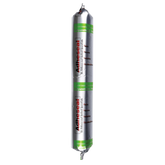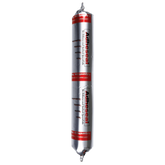Differences Between Polyurethane Adhesives & Sealants
Introduction
In the trades industry, understanding the difference between polyurethane adhesives and sealants is crucial. Though they may seem similar, their unique properties and applications set them apart.
Polyurethane Adhesives
Polyurethane adhesives are designed to bond materials together, creating a strong and durable connection. They are commonly used in construction, automotive, and manufacturing applications where high-strength bonding is required.
Polyurethane Sealants
Unlike adhesives, polyurethane sealants are used to fill gaps and seal joints, providing a flexible and waterproof barrier. They are ideal for applications where movement and environmental resistance are key considerations.
Key Differences
- Bonding Strength: Adhesives focus on strong bonding, while sealants prioritize flexibility.
- Flexibility: Sealants are more flexible, accommodating movement in joints, while adhesives are more rigid.
- Curing Time: Adhesives often cure faster, while sealants may require more time for optimal performance.
- Application Methods: Adhesives are applied for bonding materials, while sealants are used to fill gaps and seal joints.
Choosing the Right Product
Selecting the right polyurethane product depends on the specific substrates and environmental conditions of a project. Here's a look at common construction substrates and their characteristics:
- Concrete: Porous and can absorb moisture, requires strong bonding.
- Metal: Non-porous, requires adhesives with high tensile strength.
- Glass: Smooth surface, needs flexible sealants to accommodate movement.
- Wood: Absorbent and can expand, requires adhesives that can handle movement.
Understanding these substrates helps in choosing between an adhesive or a sealant, ensuring the success of projects and optimal performance of the products used.
Conclusion
The distinctions between polyurethane adhesives and sealants have significant implications for their applications in various trades. Recognizing these differences ensures the success of projects and optimal performance of the products used.
Key Takeaways
- Polyurethane adhesives are used for bonding, while sealants are used for sealing and filling gaps.
- Adhesives offer strong bonding, while sealants offer flexibility and movement accommodation.
- Choosing the right product depends on project-specific needs and requirements.




